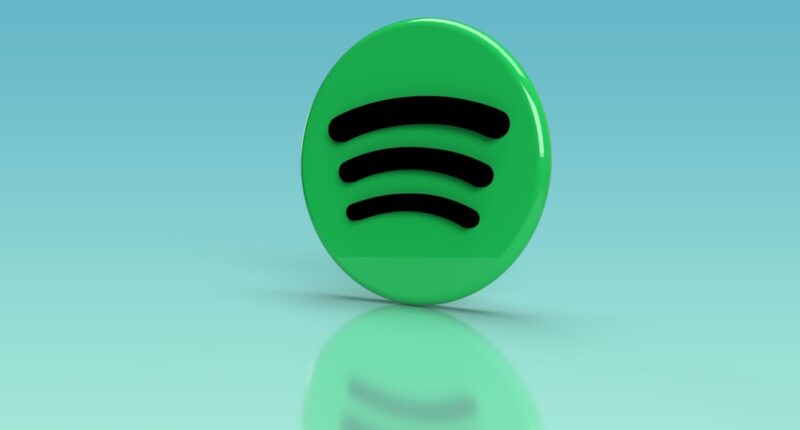The emergence of music streaming services can be traced to the early 2000s, with pioneers like Pandora and Last.fm introducing personalized internet radio stations. These platforms allowed users to create custom playlists based on their preferences, introducing the concept of streaming music over the internet. However, the launch of Spotify in 2008 marked a significant turning point in the industry.
Spotify offered a vast library of songs accessible through free ad-supported or paid subscription models, initiating a shift from physical music sales to digital streaming. Other major players, including Apple Music, Tidal, and Amazon Music, soon entered the market, further establishing streaming as the dominant form of music consumption. Technological advancements, such as improved internet speeds and the proliferation of smartphones, have played a crucial role in the growth of music streaming services.
These developments have made it increasingly convenient for consumers to access and listen to music on-the-go, contributing to the rising popularity of streaming platforms. Consequently, the music industry has undergone a substantial transformation, with streaming services now accounting for the majority of global music consumption. This shift has significantly impacted music marketing, promotion, and consumption patterns, compelling artists, record labels, and industry professionals to adapt to the new digital landscape.
Key Takeaways
- Music streaming services revolutionized the way people consume music, offering instant access to a vast library of songs.
- The music industry has been significantly impacted by the rise of music streaming, with a shift in revenue sources from album sales to streaming royalties.
- Music marketing has evolved to focus on playlist placements and algorithmic recommendations to reach a wider audience in the streaming era.
- Music promotion is crucial in the streaming age, with artists and labels leveraging social media and influencer partnerships to increase visibility.
- Personalized playlists and algorithms play a key role in music streaming, providing users with tailored music recommendations based on their listening habits.
The Impact of Music Streaming on the Music Industry
Democratization of Music Consumption
On one hand, streaming services have made music more accessible than ever, allowing users to discover and listen to a vast array of songs from around the world. This has led to a democratization of music consumption, with independent artists and niche genres finding a larger audience through streaming platforms.
Changing the Music Monetization Model
Additionally, streaming has also changed the way music is monetized, with artists now earning revenue based on the number of streams their songs receive rather than traditional album sales. This has led to a shift in how artists and record labels approach marketing and promotion, as they now focus on maximizing streaming numbers rather than physical sales.
Concerns about Artist Compensation and Sustainability
On the other hand, the rise of music streaming has also raised concerns about artist compensation and the devaluation of music. While streaming has made it easier for consumers to access music, it has also led to a decline in album sales and a decrease in overall revenue for artists. This has sparked debates about fair compensation for musicians and the sustainability of the streaming model, with many artists arguing that they are not adequately compensated for their work.
The Evolution of Music Marketing in the Streaming Era

The evolution of music marketing in the streaming era has been marked by a shift towards digital and data-driven strategies. With the rise of streaming platforms, artists and record labels have had to adapt their marketing efforts to reach audiences online. This has led to an increased focus on social media marketing, influencer partnerships, and digital advertising, as artists seek to connect with fans and promote their music in the digital space.
Additionally, streaming platforms themselves have become important marketing channels, with curated playlists and algorithmic recommendations playing a significant role in exposing new music to listeners. Furthermore, the availability of data from streaming platforms has allowed for more targeted and personalized marketing efforts. Artists and record labels can now access detailed insights into listener behavior, such as which songs are being streamed the most, where listeners are located, and what other artists they are listening to.
This data has enabled more precise targeting of marketing efforts, allowing artists to reach specific demographics and tailor their promotional strategies accordingly. As a result, marketing in the streaming era has become more data-driven and focused on engaging with audiences in a personalized and meaningful way.
The Role of Music Promotion in the Streaming Age
| Metrics | Importance |
|---|---|
| Number of streams | Indicates popularity and reach of music |
| Playlist placements | Increases visibility and discovery |
| Social media engagement | Shows fan interaction and loyalty |
| Followers/fans growth | Long-term impact and potential audience |
| Revenue from streaming | Direct financial impact |
In the streaming age, music promotion has become increasingly important for artists looking to stand out in a crowded digital landscape. With millions of songs available on streaming platforms, getting noticed can be a challenge, making effective promotion essential for success. Artists and record labels now employ a variety of promotional tactics to increase visibility and attract listeners, including securing placements on popular playlists, collaborating with influencers and brands, and leveraging social media to engage with fans.
Additionally, artists often release singles or EPs strategically to maintain a consistent presence on streaming platforms and keep their audience engaged. Moreover, the role of music promotion in the streaming age extends beyond simply getting music in front of listeners; it also involves building a strong brand and cultivating a loyal fan base. Artists now have more direct access to their audience through social media and streaming platforms, allowing them to engage with fans on a personal level and build meaningful connections.
This direct engagement has become an integral part of music promotion, as artists seek to create authentic relationships with their audience and foster long-term support for their music. As a result, successful promotion in the streaming age is not just about getting streams; it’s about building a community around an artist’s music and creating lasting connections with fans.
The Rise of Personalized Playlists and Algorithms in Music Streaming
The rise of personalized playlists and algorithms in music streaming has fundamentally changed how listeners discover and consume music. Streaming platforms use sophisticated algorithms to analyze listener behavior and preferences, curating personalized playlists tailored to each user’s tastes. These playlists offer a mix of familiar favorites and new discoveries, providing a unique listening experience for each listener.
Additionally, algorithms also power recommendation features that suggest new music based on a user’s listening history, further expanding the potential for discovery. Furthermore, personalized playlists have become an important tool for artists and record labels looking to promote their music on streaming platforms. Securing placements on popular playlists can significantly boost an artist’s visibility and increase their streams, making playlist pitching an essential part of modern music promotion.
Additionally, algorithms play a crucial role in determining which songs are recommended to listeners, making it important for artists to understand how these algorithms work and optimize their music for maximum exposure. As a result, personalized playlists and algorithms have become central to both how listeners discover new music and how artists promote their work in the streaming age.
The Future of Music Streaming Services

Enhanced Audio Quality and Personalization
As technology continues to evolve, we can expect to see improvements in audio quality, enhanced user experiences, and new features that further personalize the listening experience.
Expansion of Streaming Beyond Traditional Platforms
Additionally, as more devices become connected to the internet, we may see an expansion of streaming beyond traditional platforms like smartphones and computers, with smart speakers and other connected devices playing an increasingly important role in how people access music.
Integration with Other Forms of Media and Entertainment
Moreover, as streaming becomes even more ingrained in our daily lives, we may see further integration with other forms of media and entertainment. For example, we may see increased collaboration between streaming platforms and other content providers such as video streaming services or live events, creating more immersive experiences for users. Additionally, advancements in artificial intelligence and machine learning may lead to even more sophisticated recommendation algorithms that can anticipate listener preferences with greater accuracy.
The Influence of Music Streaming on Artist Revenue and Royalties
The influence of music streaming on artist revenue and royalties has been a topic of much debate within the industry. While streaming has made music more accessible than ever before, it has also led to a decline in traditional revenue streams such as album sales and downloads. This has raised concerns about fair compensation for artists, as many argue that the current royalty rates offered by streaming platforms are not sufficient to support their livelihoods.
As a result, there have been calls for reform within the industry to ensure that artists are fairly compensated for their work. Additionally, the dominance of major labels on streaming platforms has also raised questions about how revenue is distributed within the industry. Independent artists often receive lower royalty rates than major label artists, leading to disparities in earnings that have sparked discussions about fairness and transparency.
As a result, there is growing pressure on streaming platforms to reevaluate their royalty structures and ensure that all artists are fairly compensated for their contributions to the platform. In conclusion, the birth of music streaming services has revolutionized the way we consume and interact with music. The impact of streaming on the music industry has been profound, leading to changes in how music is marketed, promoted, and monetized.
The rise of personalized playlists and algorithms has transformed how listeners discover new music, while also presenting new opportunities for artists to promote their work. Looking ahead, the future of music streaming services is likely to be shaped by continued technological advancements and shifts in consumer behavior. However, it is essential that we address concerns about artist compensation and royalties to ensure that all contributors to the industry are fairly rewarded for their work in this new era of digital music consumption.
If you’re interested in learning more about the music streaming service market, you should check out this article on musicpromotion.tech. This article provides valuable insights into the current state of the music streaming industry and offers tips for musicians looking to promote their music on these platforms. It’s a great resource for anyone looking to understand the dynamics of the music streaming service market.
FAQs
What is the music streaming service market?
The music streaming service market refers to the industry that provides on-demand access to music content over the internet. This includes platforms such as Spotify, Apple Music, Amazon Music, and others.
How big is the music streaming service market?
The music streaming service market is a multi-billion dollar industry, with global revenues reaching over $11 billion in 2020. It is expected to continue growing in the coming years.
What are the key players in the music streaming service market?
Some of the key players in the music streaming service market include Spotify, Apple Music, Amazon Music, YouTube Music, and Pandora. These platforms dominate the market and compete for subscribers and market share.
What are the factors driving the growth of the music streaming service market?
The growth of the music streaming service market is driven by factors such as increasing internet penetration, smartphone adoption, and the shift towards digital music consumption. Additionally, the convenience and affordability of streaming services have contributed to their popularity.
What are the challenges facing the music streaming service market?
Challenges facing the music streaming service market include competition from other entertainment options, artist compensation concerns, and the need to continuously innovate and improve user experience to retain subscribers.
How do music streaming services make money?
Music streaming services make money through subscription fees, advertising revenue (in the case of ad-supported tiers), and partnerships with other companies for promotions and exclusive content. Additionally, some platforms offer premium features for an additional fee.





